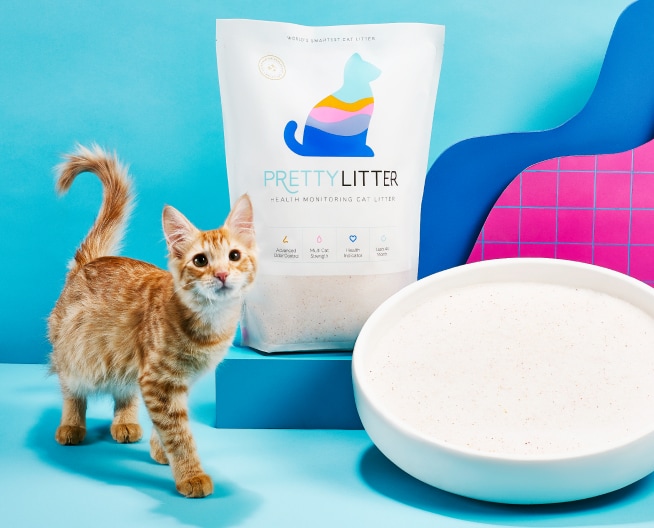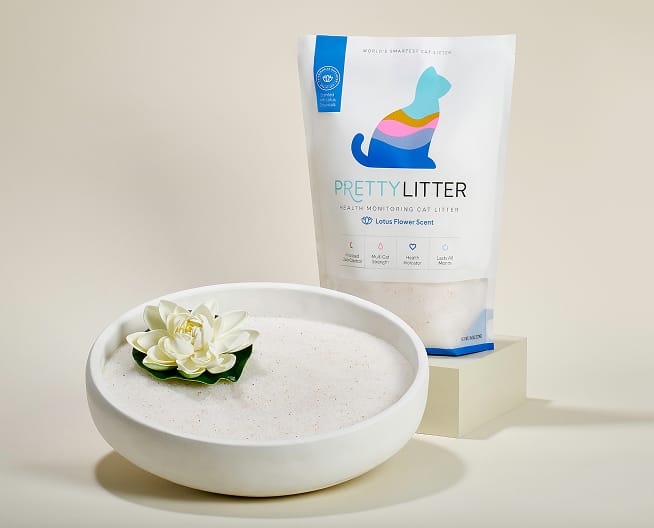February 15, 2022 |9 min read
My Older Cat is Drinking But Not Eating: 6 Ways to Help

Written by

Spend a few days as a cat parent and you’ll quickly realize that kitties aren’t the most transparent with their emotions. This statement is especially true of cranky elderly cats and even truer when your fuzzy friend isn't feeling well.
If your older cat won’t eat but has no trouble drinking, they might be trying to tell you something. And because elderly cats are more susceptible to illness and irritation, you have to pay extra attention to their quirky moods and habits.
Luckily, there are several potential ways to help when your cat is not eating. In this guide, we’ll explore common reasons why your cat might be avoiding food and water, and we’ll provide six approaches to aiding your ailing animal.
#1 Make the Food More Appealing
Let’s face it—eating the same meal day in, day out can be tiresome. You hate eating leftover meatloaf the third time in a week; maybe your old cat feels the same way. Try making mealtime more exciting by:
- Warming up wet food – Heating cat food can bring out the aroma and entice them to the proverbial table.
- Hand-feeding – Giving your cat some extra praise and attention while feeding them by hand is sometimes enough to trigger the cat's appetite. Hand-feeding also allows you to confirm that they’ve eaten.
- Switching to a new brand – Out with the old, in with the new. A change in flavors or food types might be all you need to encourage eating.
- Making a 5-star meal – If you know the human food that drives your feline friend crazy, try drizzling some on top of their usual meal. A sprinkle of fish oil, gravy, or unflavored Greek yogurt can elevate your run-of-the-mill kibble.
If these tricks convince your cat to come back to the food bowl, you’ll want to make sure the little food they do eat is high-quality. Look for nutritious foods designed specifically for senior cats, as any needed vitamins or minerals will already be present. Doing light research can help you figure out how to choose cat food.
#2 Assess the Eating Area
Whether your cat is an outwardly fussy eater or not, something in their eating area might be throwing them off. A cleanliness check can help you identify potential culprits. Is the food or water bowl dirty? Is there kibble or spilled water on the ground?
Doing a quick scan of their “dining room” can be more enlightening than you might think.
If all seems normal in the eating area, you can try changing food bowls or even feeding locations. Your feline may have had a fright in their usual spot—for example, when someone dropped a pan in the kitchen while they were eating. If your cat starts associating their food area with loud, scary sounds, it’s understandable that they’ll avoid it at all costs.
#3 Give Them Space
You’re worried about your cat; it’s only natural that you want to keep checking in on them. But if they’re not eating due to stress or anxiety, crowding them at the food bowl won’t help.
To keep an eye on your cat without cramping their style, try:
- Setting up a nanny cam
- Placing the food dish downstairs and watching from above
- Angling a mirror to watch them eat from another room

#4 Change Up Your Feeding Routine
If your old cat won’t eat, stop serving up a breakfast buffet each morning. Instead, try giving your feline smaller meals throughout the day. By doing so, you can ensure the food is fresh and keep a closer eye on their eating habits. This technique can also keep you from wasting food when your cat isn’t eating.
Occasional offerings of your cat’s favorite treats and snacks might also convince them to eat. Keep in mind, however, that most treat products aren’t designed—or required—to meet nutritional adequacy requirements, so a 100% treat diet won’t really solve your problem. Additionally, make sure you’re aware of what to avoid when feeding your cat.
#5 Catch the Warning Signs Early
If your senior cat’s reason for not eating is more serious than a newfound hatred of chicken, you’ll want to identify the problem as soon as possible.
Using a health monitoring cat litter like PrettyLitter allows you to be proactive. Should the litter change color, you’ll know about a potential health issue right away—no guesswork needed.
#6 Seek Veterinary Treatment
If you’ve noticed other changes in the cat behavior (or their litter) or your initial efforts have failed to end your cat’s hunger strike, the best way to help is to seek medical advice from the vet.
Depending on the diagnosis, your senior cat may need medicine or a procedure to help them return to their usual silly self.
Common medications for cats that won’t eat include:
- Antacids
- Antinauseant
- Appetite stimulant
- Food supplement
- Painkillers
Even though your vet should be able to pinpoint the problem, it’s helpful to understand the potential causes of your adult cat’s discomfort so that you can observe any other telltale symptoms.
Understanding the Reasons
If your cat is still refusing to eat, this may stem from various reasons. Some reasons include the following:
- Underlying health issue: a cat’s refusal to eat or drink could be a sign of an underlying health issue, such as kidney disease, gastrointestinal issues, dental issues, or urinary obstruction.
- Dental pain: inflamed gums, dental abscesses, or other dental issues can cause mouth pain and discomfort and prevent your cat from eating
- GI issues: Cats with gastrointestinal issues may experience nausea or abdominal pain, leading to a loss of appetite
- Change in environment: cats are creatures of habit, and changes in their environment, routine, or introduction of new food can lead to temporary loss of appetite.
- Stress or anxiety, cats can become stressed or anxious due to changes in their surroundings, the introduction of a new pet, or other factors.
What to Do If Your Cat Isn’t Drinking Water Either
In addition to not eating, if you notice your cat is not drinking water either, it can amplify the situation and potentially lead to dehydration. Dehydration can further contribute to their weakened appetite and overall health.
To address this concern, you can try a few things to encourage your cat to stay hydrated. Provide fresh, clean water in multiple locations around your home, as some cats prefer different water sources. Consider using a clean, wide bowl to make drinking more comfortable. If your cat is still not drinking, you can discuss with your veterinarian the possibility of adding water to wet food to ensure your cat stays hydrated.
Care for Your Elderly Cat with PrettyLitter
Changing your elderly cat’s food or environment can help them regain their appetite. Sometimes, though, time is all that’s needed. If your cat starts eating again after a day or two, it might be nothing more than a bout of picky eating.
But if their loss of appetite continues or you notice other signs of illness, a visit to the vet is in order.
As a cat owner, it’s your responsibility to monitor your feline’s food intake. Keeping an eye on where that food ends up can also help you understand their overall health. No need to make uncomfortable eye contact as they go, though. With PrettyLitter’s color-changing crystals, you can spot early signs of various illnesses after their trip to the litter box.
Sources:
Association of American Feed Control Officials. Treats and Chews. https://talkspetfood.aafco.org/treatsandchews
BondVet. Why is My Cat Not Eating or Drinking? https://bondvet.com/b/why-is-my-cat-not-eating-or-drinking
Cornell University College of Veterinary Medicine. The Special Needs of a Senior Cat. https://www.vet.cornell.edu/departments-centers-and-institutes/cornell-feline-health-center/health-information/feline-health-topics/special-needs-senior-cat
Cornell University College of Veterinary Medicine. Hyperthyroidism in Cats. https://www.vet.cornell.edu/departments-centers-and-institutes/cornell-feline-health-center/health-information/feline-health-topics/hyperthyroidism-cats
Cornell University College of Veterinary Medicine. Chronic Kidney Disease. https://www.vet.cornell.edu/departments-centers-and-institutes/cornell-feline-health-center/health-information/feline-health-topics/chronic-kidney-disease
Cornell University College of Veterinary Medicine. Feline Diabetes https://www.vet.cornell.edu/departments-centers-and-institutes/cornell-feline-health-center/health-information/feline-health-topics/feline-diabetes










